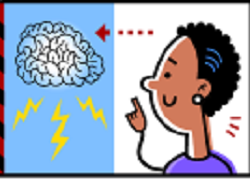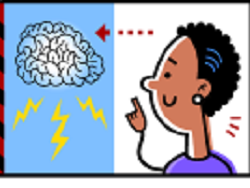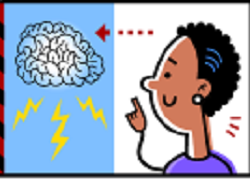


Imagine having to learn a new sport when the players who already know the game are wearing invisibility cloaks. Now imagine learning to dance while you are wearing a blindfold and earplugs. Obviously we learn best when we can see and hear what is going on around us. We watch, listen, imitate and adapt what we see and hear to fit our own styles and interests and then build our knowledge and skills from there. Teachers know and use the power of observation and demonstration with students when teaching new skills in the classroom. But how do they teach students to think? How can students watch and hear good thinking when thinking happens inside of our brains?
Thinking is essentially invisible and needs to be taught explicitly in a visible way.
One way to make thinking visible is by using object-centered discussions. Closely examining concrete objects sparks students’ curiosity and leads to increasingly complex thinking. Always begin the inquiry by having students look closely at the selected object and share their observations with each other. Starting with learners’ own observations, ideas and impressions provide a basis for them to construct and connect new knowledge. Most students will be capable of examining objects visually, tactually or aurally, and regardless of background knowledge, learning style or skill, they can observe features of an object, ask questions about it, and generate ideas and connections. One of the primary ways people build on their own impressions is by voicing them, reflecting on them, extending them and using them as the basis for questioning and interpretation.
To help students dig deeper, ask them probing questions or engage them in activities that require them to build on their observations in order to form judgments or evidence-based interpretations. For example, students might examine a feather duster and create a list of their observations from looking at it and touching it. Now ask them to brainstorm different ways that a feather duster could be used. Then ask them to consider the pros and cons of using it in those ways, using their observations as their evidence. This will help students uncover the complexity of an object by encouraging them to think expansively about it. They will be verbalizing their different points of view and personal connections, thus making their thinking visible to themselves, their peers and their teacher.
So what’s the best way to get started? Pick an object and try it out with students! Select something that is loosely connected to the content you are teaching, but not too precisely matched, because having students uncover the link is part of the point of object-centered learning. Any type of object will do from household items to works of art. The sky’s the limit.
When thinking is made visible in the classroom, students become more meta-cognitive and think about their thinking. It becomes clear to them that school is not just about memorizing facts and figures but is about exploring ideas. A huge benefit to teachers is the ability to uncover misconceptions, depth of prior knowledge, reasoning ability, and degree of understanding through observation of the object-centered discussions. So, take off the thinking invisibility cloak to reveal the power of object-centered discussions. Help your students become skillful thinkers in order to solve problems creatively, analyze knowledge, and make wise life decisions.
Don't miss out on updates and chances
to sharpen your skills with participant-centered learning.




3740 N Chestnut St #113 - Chaska, MN 55318-3053